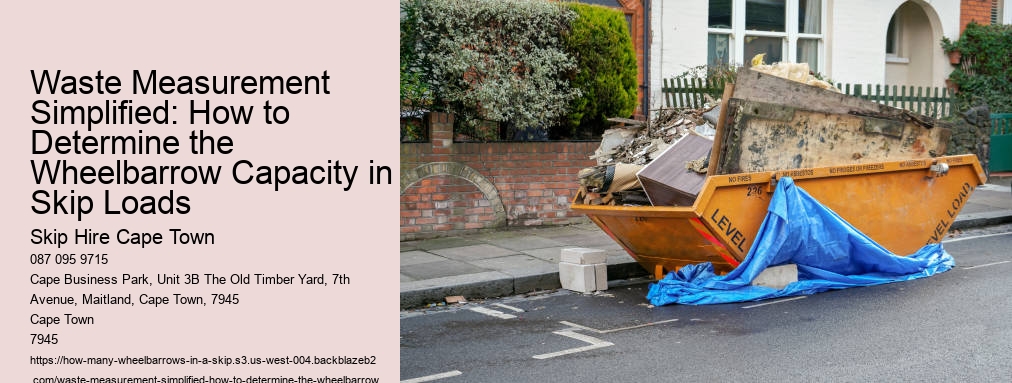
Managing waste effectively is an integral aspect of any construction, renovation, or landscaping project. While skips are a common solution for waste disposal, understanding how much waste a skip can handle – in other words, determining its capacity – can sometimes be a challenge. This article aims to simplify waste measurement by helping you determine the wheelbarrow capacity in skip loads.
Both wheelbarrows and skips are widely used in construction and landscaping projects. A wheelbarrow is a small hand-propelled vehicle typically with a single wheel, designed to be pushed by one person. Its main use is to transport materials from one location to another.
On the other hand, a skip is a large open-topped waste container designed for loading onto a specialized truck. Skips can hold a much larger amount of waste than wheelbarrows, making them ideal for large-scale projects. How Many Wheelbarrows In A Skip? .
The capacity of a standard wheelbarrow is approximately 0.24 cubic yards. In simpler terms, it can carry about 100 liters of material, depending on the type and density of the material.
Skips, however, come in a variety of sizes, typically measured in cubic yards. From the small 2-yard mini skip to the sizable 40-yard roll-on roll-off skip, the capacity of a skip can vary greatly. For example, a 2-yard mini skip can hold approximately 25 black bin bags, while a larger 8-yard builder's skip can accommodate about 80 black bin bags.
The concept of determining wheelbarrow capacity in skip loads refers to how many wheelbarrows' worth of waste can fit into a single skip. Using the standard wheelbarrow capacity mentioned above (0.24 cubic yards), you can estimate the number of wheelbarrow loads that a skip of a particular size can accommodate.
For instance, an 8-yard skip can hold approximately 33 wheelbarrow loads, considering the wheelbarrow has a 0.24 cubic yard capacity. However, it's crucial to remember that these figures are rough estimates, and the actual number may vary based on the type and density of the waste material.
## Factors Influencing Skip Capacity
Several factors can influence the actual capacity of a skip, including:
1. **Type of Waste**: The type of waste can affect how much fits in a skip. Dense, heavy materials like soil and concrete take up less space than lighter, bulkier materials like garden waste or household items.
2. **Loading Efficiency**: The way waste is loaded into the skip can also impact its capacity. A well-packed skip can hold more waste than one loaded haphazardly.
Understanding the capacity of your skip in terms of wheelbarrow loads can make it easier to estimate the number of skips you need for your project. This understanding will allow you to plan effectively, minimize costs, and ensure you dispose of your waste in a responsible manner.
Remember, waste management is not just about getting rid of rubbish – it's also about efficiency, cost-effectiveness, and environmental responsibility. By simplifying your waste measurement processes, you're one step closer to achieving these goals.
From Wheelbarrows to Skips: Converting Measurements for Effective Waste Management